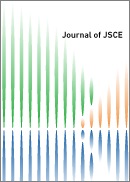The Editorial Committee on Journal of Japan Society of Civil Engineers
現在地
Journal of JSCE
The Japan Society of Civil Engineers produces the Journal of JSCE to provide access to rigorously refereed innovative research and practical papers across the fields of civil engineering.
The Society has been publishing domestic journals since 1944. Papers published in the journals mainly uses the Japanese language for the main body, but all papers include their English titles and abstracts. To increase the international appeal of the journals, the Society decided to launch the International Journal (Journal of JSCE), the first of which was published in 2013 as an online Journal. Theoretical and practical contributions to the fields of civil engineering are all welcome.

